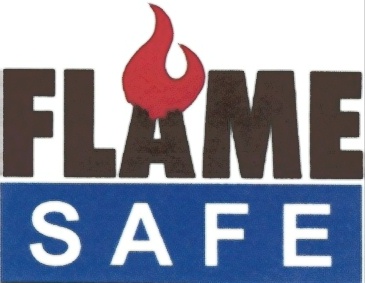Flame Safe USA
Ph: + 1-817-740 -9197
email: [email protected]
2650 Warfield Ave., Fort Worth, TX 76106
Fire Retardant wood, fire retardant plywood, fire retardant lumber, millworks, wood specialties, I-Joists, MDF, OSB, particle board, T-111, fire retardant timbers
Dallas, Fort Worth, Austin, San Antonio, Houston, Waco, Odessa, Laredo, Brownsville, El Paso, Corpus Christi, Amarillo, Shreveport, Tulsa, Oklahoma , Dallas, , Plano, Frisco, Dallas County, Tarrant County, Abilene
Frequently Asked Questions
Do Fire Resistant Sprays Stop Fires?
In reality, nothing stops a fire. Every fire starts some where. While there is no foolproof way to prevent a fire, a fire resistant spray can greatly lower the rate at which it spreads and aids in preventing the surface from catching fire in the first place.
Hot ashes blowing on neighboring properties contribute geatly fo the spread of fire. When homeowners use fire retardants on their properties, the heated ashes are much less likely to ignite anything they fall on, thus diminishing the spread of fire.
How Do Fire Retardant Sprays Work?
When exposed to fire, a material that has been treated with fire retardant sprays forms a carbon char that acts as a shield that protects the area. The material will become black, but inhibits the spread of flame, which will limit total damage and life-threatening risk. It also provides you more time to react and put out the fire.
How can I Increase the Fire Resistance of Wood?
Any wood in or around your building is an excellent source of fuel for a fire. This is why wooden structures and materials need to be made heat resistant. Applying a fire retardant product to the wood susbtrate creats an additional barrier between the highly flammable wood and the flames. Other benefits of utilizing a fire retardant on the wood include decreased smoke production and longer ignition time, giving addditional time for people inside to escape during a fire. Even a few extra minutes is incredibly valuable in a structure fire. Flame Safe has the "best in class" interior and exterior fire retardants for any type of wood, including manufactured wood products, trusses, doors, raw wood, decking, fencing, soffits and more. No special equipment is required and any qualified contractor can apply i as easily as you would apply traditional paint.
Is your product a Clear Coating?
Flame Safe offers clear fire retardant coatings that are ideal for both commercial and residential settings. Fire resistant clear coats can prevent or delay flame spread on your property and fire retardant products are essential for complying with fire regulations in commercial and residential buildings. Flame Safe Fire Poly FP100 Clear Coat is ideal for both exterior and interior wood surfaces. Finished surfaces will exhibit semi-gloss to gloss finish similar to lacquers or epoxies.. Flame Safe Fire Poly FP75I (ws) and FP75E have a clear matte finish, is a primer for latex paint, and is stainable with aqueous based stains and sealers. Flame Safe Fire Poly FP50CC for Artificial Plants and Foliage help protect artificial plants such as Christmas trees and other decorative plants.
Do you have a Fire Retardant Paint for Plastic?
Flame Safe Fire Poly FPCC and Fire Pol FP50CC help meet safety requirements and building code compliance.
How do you make plastic Fire Resistant?
Flame Retardant coatings for plastic ara highly effective way to slow down flame spread and meet fire safety requirements. Flame Safe Fire Poly FPCC and FP50CC adds a protective barrier over the plastic material that slows down the development of fire and reduces the intensity of it. It greatly reduces the flammability of plastic items. Most importantly, fire retardant for plastic provides people inside the building with more time to escape a fire and ultimately save lives.
What Is a Fire Retardant?
A fire retardant is a substance used to slow down or prevent the spread of fire. Fire retardants are often used on combustible items in building structures (i.e wood, plywood, wood products) as well as in clothing and other materials.
There are many different types of fire retardants, and they work in different ways. Some fire retardants create a barrier between the fuel and the oxygen, while others work by absorbing heat or cooling the fuel.
Fire retardants can be used alone or with other fire safety measures, such as sprinklers or fire doors. Fire retardants are typically tested using the ASTM E84 standard, which is given classification ratings of A, B ,C or D.
